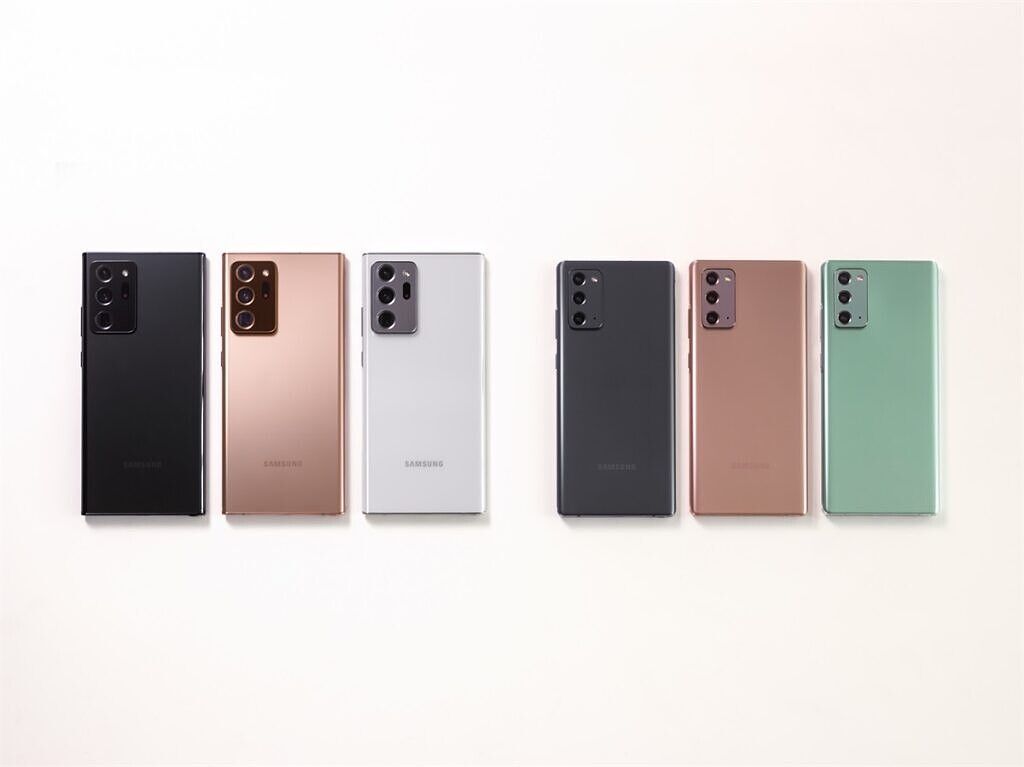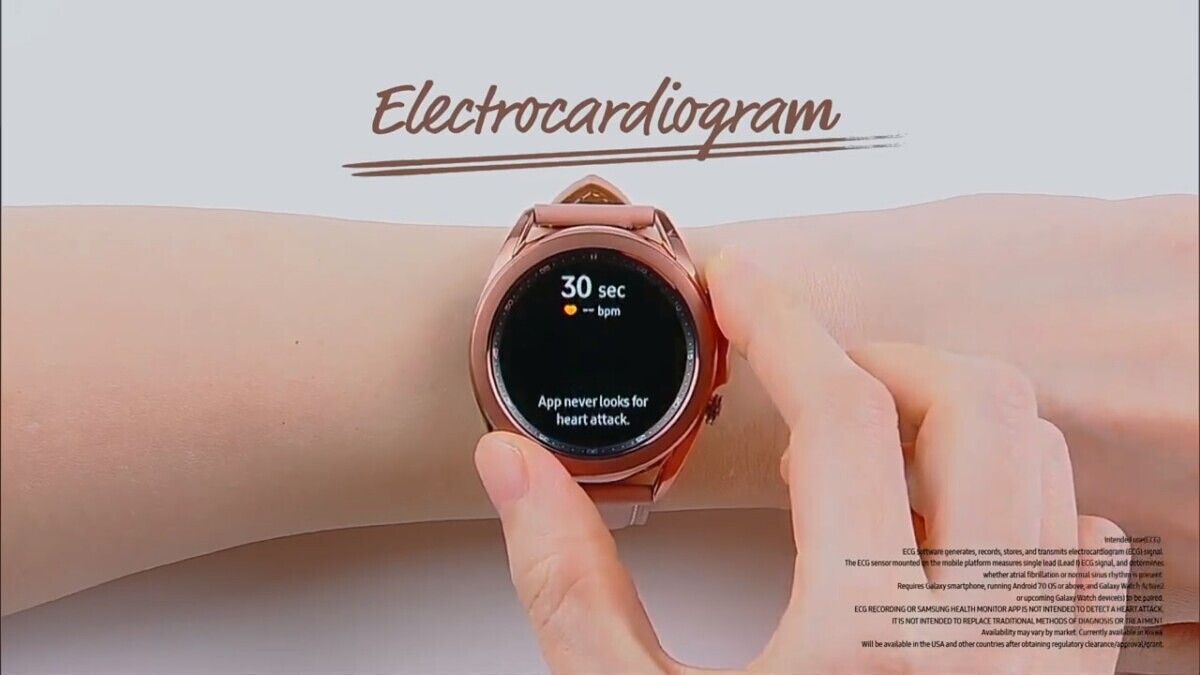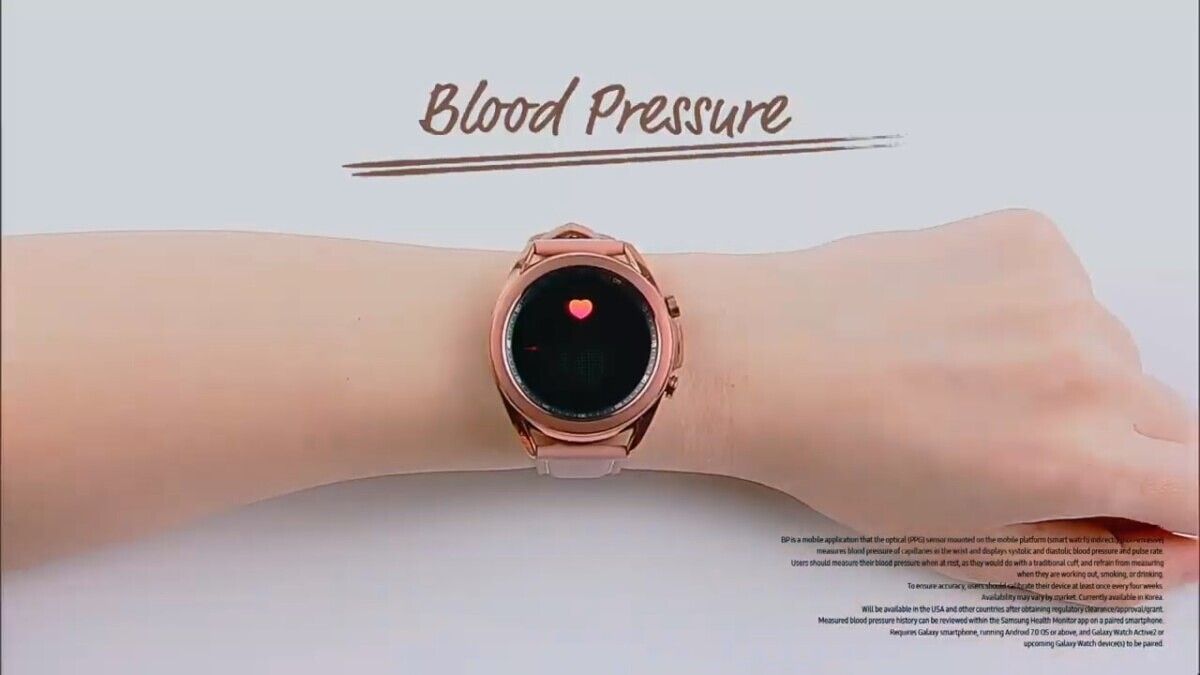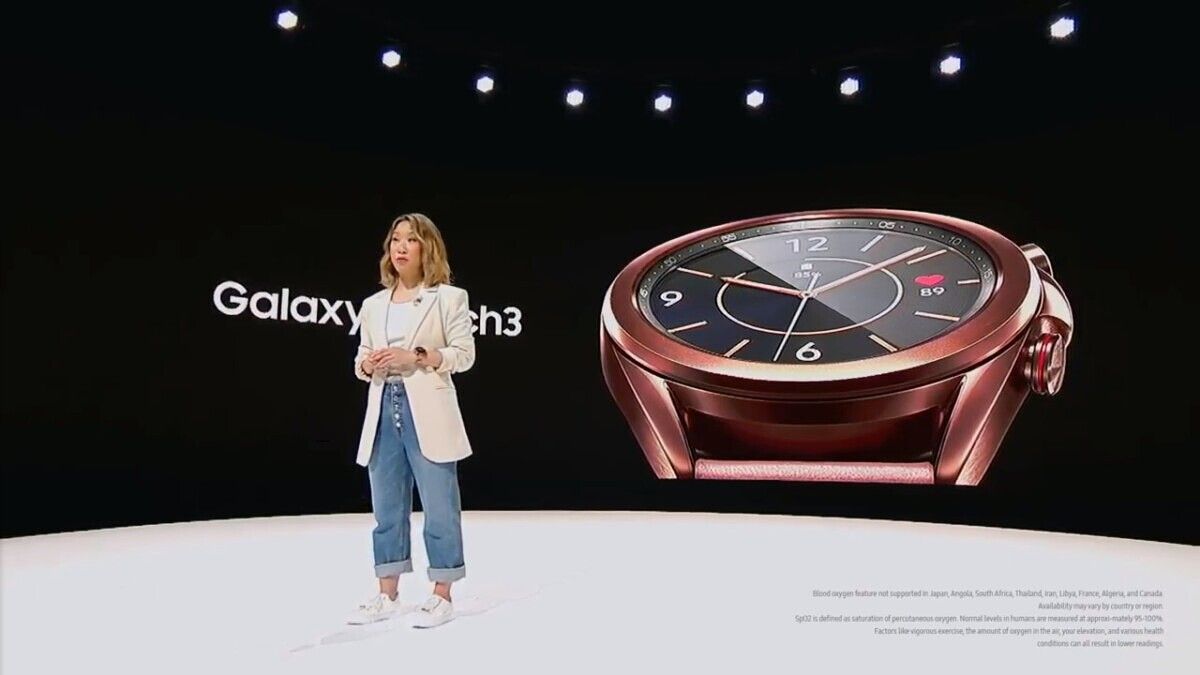After months of leaks of specifications and renders, the moment is finally upon us. At Samsung Unpacked 2020 – held online-only due to the COVID-19 pandemic this year – Samsung has finally taken the wraps off five new devices: the Galaxy Z Fold 2, Galaxy Note 20, Galaxy Note 20 Ultra, Galaxy Tab S7, Galaxy Tab S7+, Galaxy Buds Live and the Galaxy Watch 3, marking this as one of its most significant events in recent memory. In this article, we take a look at the Galaxy Note 20 and the Galaxy Note 20 Ultra — the newest Samungs flagships for 2020.
XDA Forums: Samsung Galaxy Note 20 || Samsung Galaxy Note 20 Ultra

Samsung Galaxy Note 20 and Samsung Galaxy Note 20 Ultra: Specifications
| Specification |
Samsung Galaxy Note 20 |
Samsung Galaxy Note 20 Ultra |
| Dimensions & Weight |
- 161.6 x 75.2 x 8.3 mm
- 194g
|
- 164.8 x 77.2 x 8.1 mm
- 213g
|
| Display |
- 6.7-inch FHD+ Super AMOLED
- 2400 x 1080
- Flat display
- 60Hz refresh rate
- HDR10+ support
- Gorilla Glass 5
- Infinity-O Display
|
- 6.9-inch QHD+ Dynamic AMOLED 2X
- 3088 x 1440
- Curved display
- 120Hz refresh rate
- Adaptive refresh rate support
- HDR10+ support
- Gorilla Glass 7/Victus
- Infinity-O Display
|
| SoC |
- Qualcomm Snapdragon 865 Plus, or
- Exynos 990
|
- Qualcomm Snapdragon 865 Plus, or
- Exynos 990
|
| RAM & Storage |
- 8GB LPDDR5 + 128GB UFS 3.0
- No microSD card expansion slot
|
- 12GB LPDDR5 + 128GB UFS 3.1
- 12GB + 512GB
- Dedicated microSD card slot for expansion up to 1TB
|
| Battery & Charging |
- 4,300mAh
- 25W wired fast charging support
- 15W wireless charging support
- Reverse wireless charging support
|
- 4,500mAh
- 25W wired fast charging support
- 15W wireless charging support
- Reverse wireless charging support
|
| Rear Camera |
- Primary: 12MP, f/1.8, Dual Pixel AF, OIS, 1/1.76″ sensor
- Secondary: 12MP, f/2.2, ultra-wide-angle, 120° FoV
- Tertiary: 64MP, f/2.0, telephoto, 3x Hybrid Optic Zoom
|
- Primary: 108MP, f/1.8, PDAF, Laser AF, OIS, 1/33″ sensor
- Secondary: 12MP, f/2.2, ultra-wide-angle, 120° FoV
- Tertiary: 12MP, f/3.0, telephoto camera, 5x Optical zoom
|
| Front Camera |
|
|
| Connectivity |
- 5G: NSA, SA, Sub6/mmWave
- LTE: Enhanced 4×4 MIMO, Up to 7CA, LTE Cat.20 – Up to 2Gbps Download / Up to 200Mbps Upload
- Wi-Fi: Wi-Fi 802.11 a/b/g/n/ac/ax 2.4GHz + 5GHz, HE80, MIMO, 1024-QAM
- Bluetooth 5.0
- USB Type-C
- NFC
- MST
- GNSS: GPS, Galileo, Glonass, Beidou
|
- 5G: NSA, SA, Sub6/mmWave
- LTE: Enhanced 4×4 MIMO, Up to 7CA, LTE Cat.20 – Up to 2Gbps Download / Up to 200Mbps Upload
- Wi-Fi: Wi-Fi 802.11 a/b/g/n/ac/ax 2.4GHz + 5GHz, HE80, MIMO, 1024-QAM
- Bluetooth 5.0
- USB Type-C
- NFC
- MST
- GNSS: GPS, Galileo, Glonass, Beidou
|
| Other Features |
- S Pen:
- 5.8 x 4.35 x 105.08 mm
- 3.04g
- Bluetooth enabled
- Up to 24 hrs of battery standby
- 4096 pressure levels
- 0.7mm pen tip diameter
- IP68
- IP68 dust and water resistance
- In-display ultrasonic fingerprint sensor
- Wireless DeX support
|
- S Pen:
- 5.8 x 4.35 x 105.08 mm
- 3.04g
- Bluetooth enabled
- Up to 24 hrs of battery standby
- 4096 pressure levels
- 0.7mm pen tip diameter
- IP68
- IP68 dust and water resistance
- In-display ultrasonic fingerprint sensor
- Wireless DeX support
- Ultra Wide Band (UWB) chip for device-to-device connections and fast file transfers
|
| Android Version |
One UI 2.5 based on Android 10 |
OneUI 2.5 based on Android 10 |
| Colors |
- Mystic Green
- Mystic Bronze
- Mystic Gray
|
- Mystic Bronze (matte)
- Mystic Black (glossy)
- Mystic White (glossy)
|
The Samsung Galaxy Note 20 and the Samsung Galaxy Note 20 Ultra are Samsung’s flagships for the second half of 2020 and represent the pinnacle of consumer-ready technology in the conventional smartphone form factor. These phones come with class-leading technologies and include the S Pen as the signature highlight feature that differentiates the Galaxy Note series from the Galaxy S series.


Design and Display
For the design, the Galaxy Note 20 and the Galaxy Note 20 Ultra have a similar design inspiration, but they have their subtle differences. For starters, the boxy “Note” look is retained on both the devices, reminiscent of their predecessors. This year too, we have two Note devices, but the naming has changed to indicate a more significant delta between the two variants.
The vanilla Galaxy Note 20 is a more humble flagship, with Samsung choosing to opt for “glasstic” as the build material of choice, meaning the phone is built out of a polycarbonate back that feels like matte glass to the touch. This swap of materials also allows the device to weigh lighter than it would have with the conventional glass and metal sandwich build. This device also comes with a 6.7″ FHD+ Super AMOLED flat display, and a disappointing 60Hz refresh rate that is unbecoming of any phone that aims to call itself a flagship in 2020. Gorilla Glass 5 on the front ensures that you do not scratch your phone as easily.




Samsung Galaxy Note 20
The Galaxy Note 20 Ultra is more ambitious. You get the glass and metal sandwich design, as you see on many premium smartphones. Some color variants have a matte finish on the rear glass, while others have a glossy finish. The front is occupied by a 6.9″ QHD+ Dynamic AMOLED curved display with a 120Hz refresh rate. Samsung is touting the Adaptive refresh rate capabilities on the Note 20 Ultra, which will allow the phone to adjust its refresh rate according to the content dynamically — going down to 1Hz for the Always-On Display, hovering at 24Hz for movies, and varying between 30 to 120Hz for gaming as needed. This should have a good effect on the battery life on the device. Unfortunately, you are still restricted to choosing between 120Hz on FHD + or 60Hz on QHD+ — you still can’t have both. There is also Gorilla Glass 7 (Gorilla Glass Victus) on the front, promising better scratch as well as drop protection.




Samsung Galaxy Note 20 Ultra
SoC, RAM, Storage and other hardware specifications
The Note 20 series are powered by the Qualcomm Snapdragon 865 Plus in the USA and some other regions, or the Exynos 990 globally. You get copious amounts of LPDDR5 RAM and UFS 3.0 storage on the vanilla variant and UFS 3.1 on the Ultra. While the Galaxy Note 20 does not feature a microSD card for expansion, the Ultra supports expansion up to 1TB.
Both the phone variants come with an in-display ultrasonic fingerprint sensor, as well as IP68 certification for dust and water resistance. Battery sizes vary because of the difference in size, with 4,300 mAh capacity on the vanilla Galaxy Note 20 and 4,500 mAh capacity on the Galaxy Note 20 Ultra. On both the phones, you also get 25W wired fast charging support, as well as 15W wireless fast charging support, as well as reverse wireless charging support.
Galaxy Note 20 Camera
The rear camera is another big differentiator between the two models. The vanilla Galaxy Note 20 gets a 12MP primary camera with OIS, along with a 64MP telephoto camera and a 12MP ultra-wide-angle camera. This setup should serve the needs of most users very well, but it isn’t as ambitious as other Samsung devices we have seen this year.
The Galaxy Note 20 Ultra, on the other hand, comes with a 108MP primary camera with OIS and laser autofocus. There is a 12MP telephoto camera with 4x optical zoom, as well as a 12MP ultra-wide-angle camera.

Pro video mode on both the phones will allow you to select the audio input. This way, you can choose a specific microphone on the device, or any other microphones connected through Bluetooth or USB.
The front camera on both the phones is the same 10MP sensor resting within the punch-hole.
S Pen and Wireless DeX
Of course, it wouldn’t be a Note device without the S Pen. The S Pen now claims to have a latency as low as 8ms, which sounds great. It also now supports Air Actions with more specific actions to go home, go back, use smart select, and to screen write, in addition to its scrolling and air pointer functions. The S Pen itself has a 0.7mm pen tip diameter, 4096 pressure levels, and promises up to 24hrs of battery standby.



The S Pen also works as a mouse input for Wireless DeX. Wireless DeX is the next iteration of Samsung’s phone-desktop solution, letting you use the smartphone as a CPU replacement for your desktop needs. As the name implies, wireless DeX is DeX, but now wireless. You can connect your device wirelessly to a Smart TV and manage both the TV and the phone simultaneously.
Ultra-Wide Band Chip
Another neat addition on the Samsung Galaxy Note 20 Ultra is the Ultra-Wide Band chip. The Ultra-Wide Band chip enables faster device-to-device connections and, subsequently, faster file transfers. You can point the Galaxy Note 20 Ultra at another Note 20 Ultra (or other future Samsung phones with the UWB chip) to prioritize connecting to that particular device, taking advantage of the precise, indoor positioning features enabled by the technology. Samsung says that in the future, UWB will be used for more accurate AR technology and may even allow you to unlock your home using your phone as a digital key.
Sadly, the regular Galaxy Note 20 does not come with the Ultra-Wide Band chip.
Samsung Galaxy Note 20 / Note 20 Ultra: Pricing and Availability
The Samsung Galaxy Note 20 will be available in Mystic Green, Mystic Bronze, and Mystic Gray color variants. The Samsung Galaxy Note 20 Ultra will be available in Mystic Bronze (matte), Mystic Black (glossy), and Mystic White (glossy) color variants.
USA
Pricing for the Galaxy Note 20 series is as follows:
- Samsung Galaxy Note 20: $999.99
- Samsung Galaxy Note 20 Ultra 128GB: $1,299.99
- Samsung Galaxy Note 20 Ultra 512GB: $1,449.99
Pre-orders for the smartphones begin from August 6, 2020, at 12.01 am ET for the USA, while open sales start from August 21, 2020. The Note 20 series will be widely available in carrier-specific and Unlocked by Samsung versions through Samsung.com, carriers, and online retailers.
Between August 6 and August 20, consumers who pre-order can get $100/$150 Samsung Credit, respectively, which can be redeemed on other Samsung products. Consumers can also get a Galaxy Note 20 for $9.73 a month or a Note 20 Ultra for $18.07 a month with eligible trade-in valued up to $650 on Samsung.com. Consumers who purchase Galaxy Note 20 or Note 20 Ultra from Samsung.com using their Samsung Money by SoFi account will receive an additional 7.5% discount.
Unleash the power of the next Galaxy with the new Galaxy Note 20, which comes equipped with an octa-core Snapdragon or Exynos processor, 8GB of RAM and 128GB of storage. There's also a triple camera setup features two 12MP cameras and a 64MP telephoto, as well as a 10MP front camera, 6.7-inch display, and 4,300mAh battery. Pre-order from Friday to get it on release day, August 20!
Pre-order offer: PowerA’s new MOGA XP5-X+ Bluetooth gaming controller, and Xbox Game Pass subscription for 3-months

The newly launched MOGA XP5-X Plus Bluetooth Controller and a free Xbox Game Pass subscription for 3-months form one of the bundles that you can redeem your pre-order offer credit towards. Samsung is positioning both the phones as gaming smartphones, so this bundle will likely attract gamers. However, note that this Xbox Game Pass Ultimate Bundle offering is dependent on regions.
Samsung Galaxy Note 20 Accessories & Cases


No Samsung flagship launch would be complete without a bunch of official first-party cases from Samsung. If you wanted a few options, Samsung has you covered with a range of official first-party accessories. We’ve also rounded up the Best Galaxy Note 20 cases into a handy guide for you!

These cases for the Galaxy Note 20 Ultra are:
- Clear Protective Cover — Black, White
- Protective Standing Cover — Black, White
- Kvadrat Cover (recycled materials) — Grey, Red
- LED View Cover — Black, Pink, White
- Clear View Cover — Black, Pink, White
- Leather Cover — Black, Green, Brown
- Silicone Cover — Black, Pink, White
These cases retail separately with pricing and availability changing across regions.
What are your thoughts on the Samsung Galaxy Note 20 and the Samsung Galaxy Note 20 Ultra? Let us know in the comments below!
The post Samsung officially launches the Galaxy Note 20 and Galaxy Note 20 Ultra, its latest flagships appeared first on xda-developers.
from xda-developers https://ift.tt/2XuJnkC
via
IFTTT

































